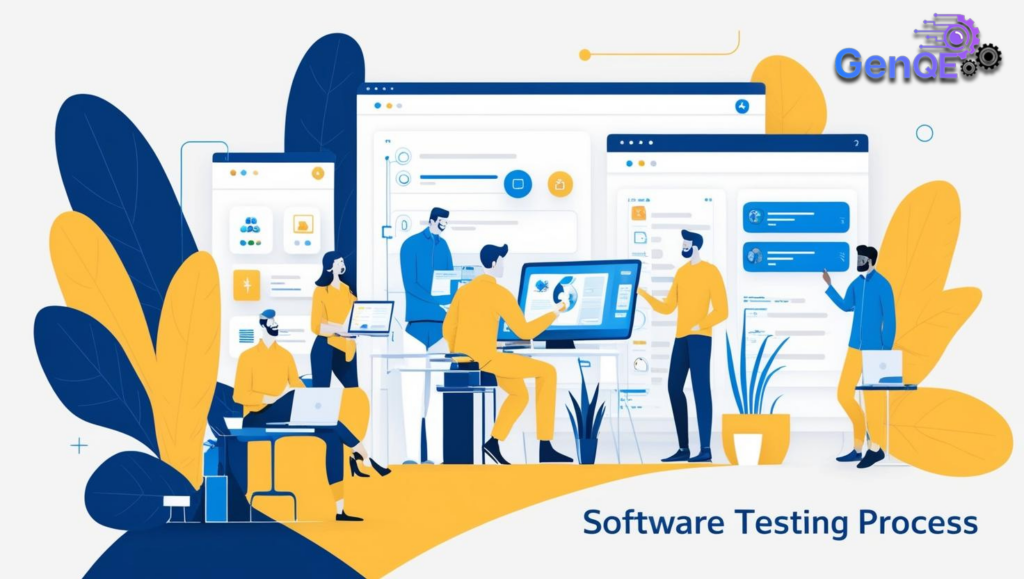
In the rapidly evolving digital ecosystem, software has become the invisible infrastructure that powers nearly every aspect of modern life. From the smartphone in your pocket to the complex systems managing global financial markets, the reliability of software is no longer a technical consideration—it’s a fundamental requirement for human progress.
The Critical Importance of Software Quality
Consider for a moment the intricate digital tapestry that surrounds us. A single morning might involve:
- Checking a banking app
- Scheduling a ride-share
- Monitoring health metrics through a wearable device
- Joining a global video conference
- Managing smart home systems
Each of these interactions represents a complex network of software systems that must function flawlessly, securely, and instantaneously.
The Astronomical Cost of Failure
The economic implications of software failures are staggering. According to recent industry research:
- Global software failure costs exceed $1.7 trillion annually
- A single critical bug can cost organizations between $50,000 to $1 million
- 70% of digital transformation initiatives fail due to software quality issues
These aren’t just numbers—they represent real-world consequences that can destroy businesses, compromise user trust, and potentially endanger lives.
The Evolution of Software Testing
Historical Perspective
In the early days of computing, software testing was a rudimentary process. Programmers would:
- Manually execute code
- Track potential issues on paper
- Rely primarily on individual expertise
- Spend hours verifying individual software functions
The complexity was manageable, and the stakes were relatively low.
The Technological Transformation
Subtle Reference: Modern platforms like GenQE represent a quantum leap in testing capabilities, demonstrating how artificial intelligence can transform quality assurance from a reactive process to a predictive, intelligent discipline.
Today’s software testing is a sophisticated blend of:
- Advanced mathematics
- Artificial intelligence
- Machine learning
- Predictive analytics
- Psychological understanding of user behavior
The Technological Foundations of Modern Testing
Artificial Intelligence and Machine Learning
Machine learning has revolutionized software testing by introducing unprecedented capabilities:
- Automatic test case generation
- Predictive defect detection
- Dynamic testing strategy optimization
- Real-time risk assessment
These aren’t incremental improvements—they represent a fundamental reimagining of quality assurance.
How AI Transforms Testing Processes
Modern AI-powered testing tools can:
- Analyze historical defect data with extraordinary accuracy
- Generate comprehensive test scenarios in minutes
- Identify potential risk areas before they become critical
- Continuously learn and improve testing strategies
Microservices and Distributed Architectures
Contemporary software applications are no longer monolithic structures. Microservices architectures have introduced:
- More scalable systems
- Easier maintenance
- Independent deployment capabilities
- Increased complexity in testing
Each microservice represents a potential point of failure, requiring sophisticated testing strategies that can validate both individual components and their intricate interactions.
Challenges in Modern Software Testing
Cloud-Native Testing Complexities
Cloud computing has transformed testing methodologies. Applications must now be validated across:
- Multiple cloud environments
- Diverse infrastructure configurations
- Various geographical regions
- Different network conditions
The traditional concept of a controlled testing environment has become increasingly abstract and challenging to define.
Performance and Load Testing
Modern applications must perform flawlessly under extreme conditions:
- Handling millions of simultaneous users
- Maintaining response times under heavy load
- Ensuring consistent performance across different devices
- Managing complex network interactions
The Human Element in an Automated World
Despite technological advancements, human expertise remains irreplaceable. Intelligent testing tools augment human capabilities rather than replace them.
Modern quality assurance professionals are evolving into strategic technologists who:
- Design complex testing scenarios
- Interpret nuanced test results
- Provide strategic insights
- Guide AI-powered testing tools
The Skills of Modern Testers
Successful quality assurance professionals now require:
- Advanced programming skills
- Understanding of machine learning
- Strategic thinking capabilities
- Deep domain knowledge
- Ability to work with AI-powered tools
Industry-Specific Testing Challenges
Healthcare Software Testing
In medical technology, testing goes beyond functionality—it’s about patient safety:
- Ensuring accurate medical record management
- Validating diagnostic algorithm accuracy
- Maintaining patient data privacy
- Compliance with strict regulatory requirements
Financial Services and Fintech
Banking and financial applications require extraordinary precision:
- Microsecond-level transaction processing
- Robust security vulnerability testing
- Compliance with complex regulatory frameworks
- Performance under extreme load conditions
Automotive and Autonomous Systems
As transportation becomes increasingly digital:
- Testing becomes a matter of life and death
- Simulation of virtually every possible scenario is crucial
- Complex interactions between hardware and software must be validated
Emerging Technological Frontiers
Quantum Computing and Testing
Quantum computing promises revolutionary testing capabilities:
- Simulating incredibly complex scenarios
- Testing multiple system states simultaneously
- Validating intricate algorithmic interactions at unprecedented speeds
Edge Computing Challenges
The rise of edge computing introduces new testing complexities:
- Decentralized network validation
- Performance across diverse computational capabilities
- Connectivity issue simulation
Ethical Considerations in Software Testing
As software becomes more integrated into critical societal systems, ethical considerations become paramount:
- Ensuring user privacy
- Protecting sensitive data
- Designing inclusive technologies
- Maintaining accessibility
- Promoting responsible technological innovation
The Future of Software Testing
Predictive Quality Engineering
The next frontier of testing is predictive and proactive:
- Anticipating potential issues before they occur
- Continuous learning and adaptation
- Integration of AI and human expertise
Continuous Testing and DevOps
Testing is no longer a separate phase but an integrated, continuous process:
- Embedded throughout the development lifecycle
- Real-time quality validation
- Immediate feedback loops
Conclusion: Quality as a Strategic Imperative
Software testing has transcended its technical origins to become a critical business strategy. In an increasingly digital world, quality is not just a metric but a fundamental competitive advantage.
Organizations that view testing as a strategic opportunity rather than a cost center will lead the technological revolution.
The future belongs to those who can transform quality assurance from a defensive mechanism to an innovative engine driving technological progress.